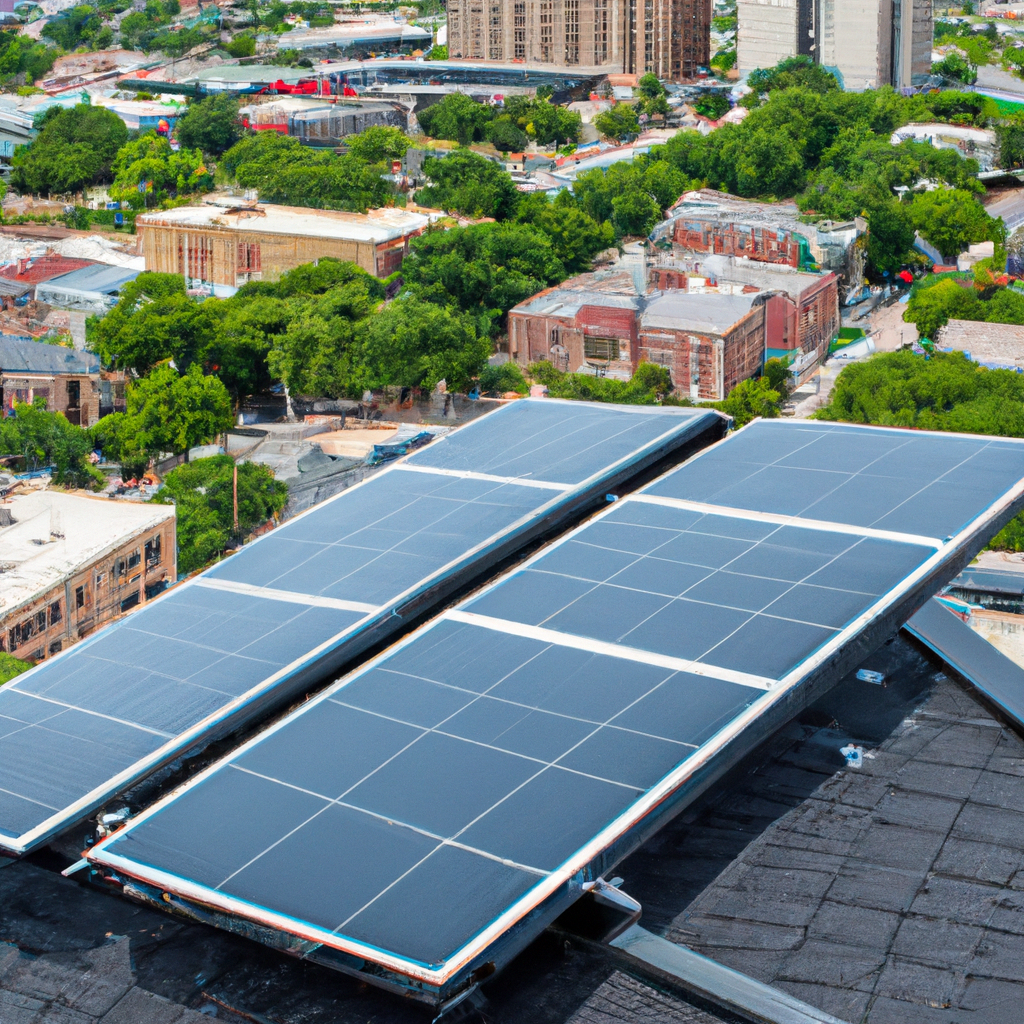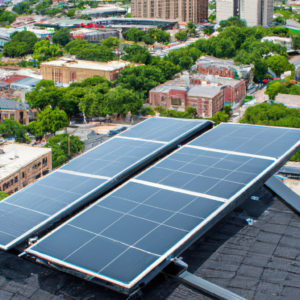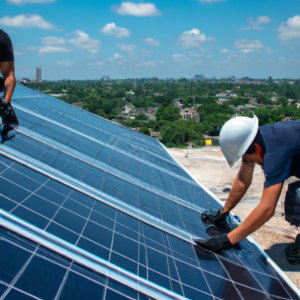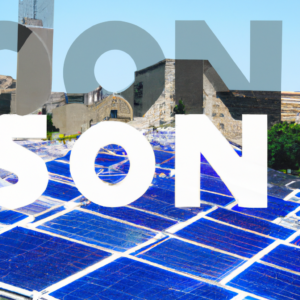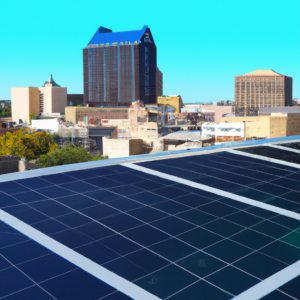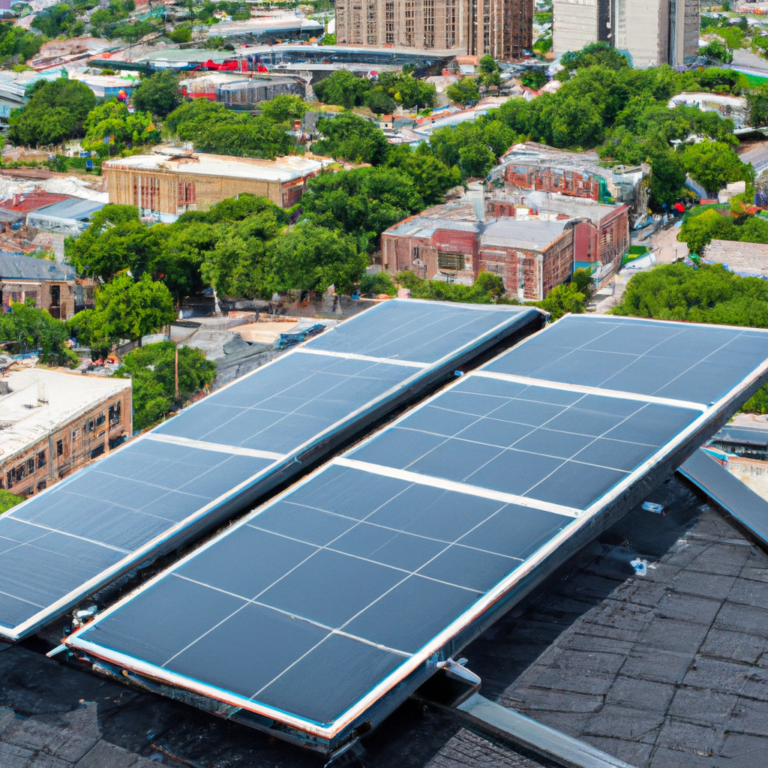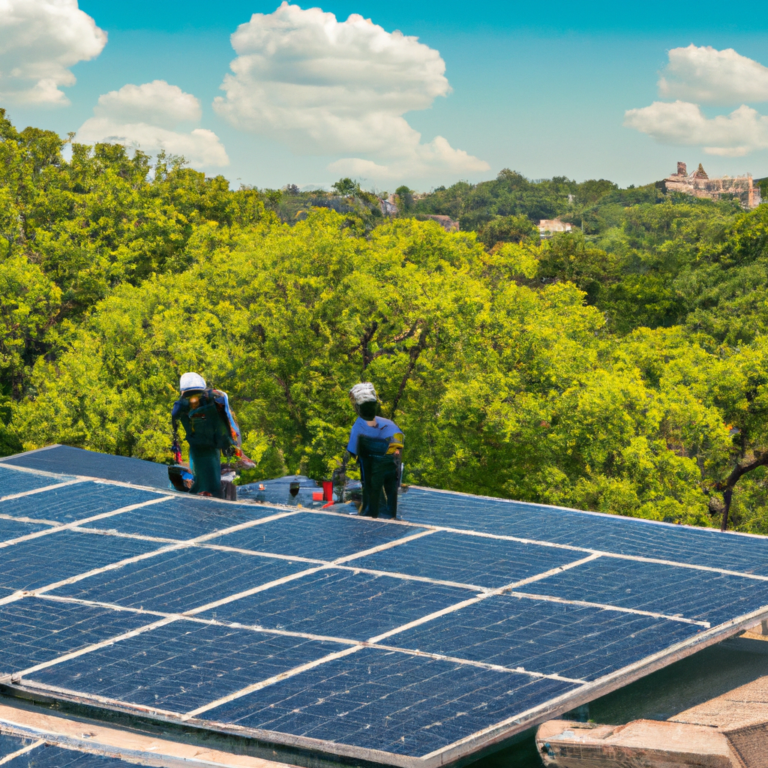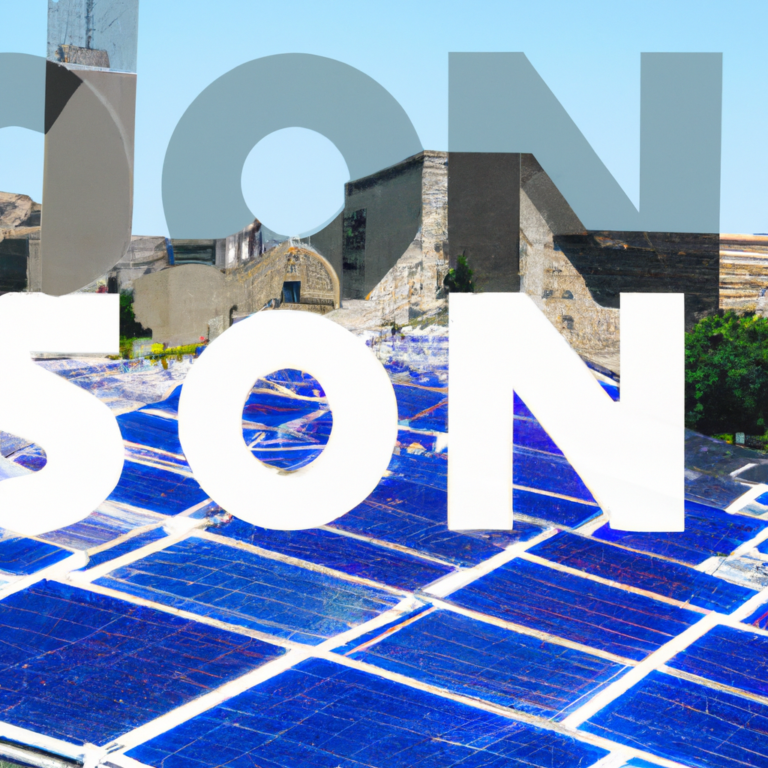Did you know that the solar power industry in San Antonio has experienced a surge of installations in recent years? With the increasing demand for renewable energy, more homeowners are opting for solar panel systems.
In this article, we will guide you through the process of simplifying your solar panel installation. From assessing your home’s solar potential to understanding the installation process and financing options, we’ll provide expert advice to help you maximize energy efficiency and ensure long-term success with your solar power system.
Benefits of Solar Power
One of the biggest benefits of solar power is that it allows you to decrease your reliance on traditional energy sources. By harnessing the power of the sun, you can generate electricity that’s clean, renewable, and sustainable. This not only reduces your carbon footprint but also helps to mitigate the effects of climate change.
Additionally, solar power offers the advantage of grid integration, which means that you can connect your solar panels to the electrical grid. This allows you to sell any excess electricity generated by your system back to the grid, earning credits or even making money.
Another benefit is community solar, which enables multiple households or businesses to collectively invest in a shared solar energy system, making solar power accessible to those who may not have the means or ability to install their own panels.
Assessing Your Home’s Solar Potential
Assess if your home is suitable for solar panel installation. Before investing in solar power, it’s important to evaluate the efficiency and optimize the orientation of your home for maximum solar potential. Here are a few key factors to consider:
| Factor | Importance | Action |
|---|---|---|
| Roof Type | Critical | Determine if your roof is suitable for solar panel installation. |
| Sun Exposure | High | Assess the amount of direct sunlight your roof receives throughout the day. |
| Shading | Medium | Identify any obstructions, such as trees or neighboring buildings, that may cast shadows on your roof. |
Evaluating the efficiency of your home involves analyzing your energy consumption, insulation, and potential for energy-saving upgrades. Optimizing the orientation requires aligning the solar panels in a direction that receives the most sunlight. By carefully assessing your home’s solar potential, you can make an informed decision about whether solar panel installation is right for you.
Choosing the Right Solar Panel System
When choosing the right solar panel system for your home in San Antonio, it’s important to consider various factors.
One of the most important factors to evaluate is the solar panel efficiency. Solar panel efficiency refers to the amount of sunlight a panel can convert into electricity. Higher efficiency panels generate more electricity from the same amount of sunlight, which means you can produce more energy and save more on your electricity bills.
It’s also important to evaluate different options available in the market. Consider factors such as the type of solar panels, their warranties, and the reputation of the manufacturer.
Understanding the Installation Process
To simplify your solar panel installation in San Antonio, it’s crucial to understand the process involved. Here is a step-by-step breakdown of the installation timeline:
-
Site Assessment: A solar professional will visit your home to evaluate the site, including roof condition, shading, and orientation. They’ll also assess your electrical system’s compatibility.
-
Design and Permits: Based on the assessment, the installer will create a customized solar panel system design and submit it for permits. This process typically takes a few weeks.
-
Installation: Once permits are obtained, the installation team will mount the panels on your roof, connect them to the electrical system, and install the necessary equipment. This process usually takes one to three days.
During the installation, you may encounter some common challenges, such as roof obstacles, electrical upgrades, or inclement weather. However, an experienced installation team can navigate these obstacles to ensure a successful solar panel installation.
Financing Options for Solar Panel Installation
When it comes to financing your solar panel installation in San Antonio, you have a variety of options to choose from. Payment plans are available that allow you to spread out the cost of your installation over time, making it more affordable.
Additionally, there are tax incentives and rebates available that can help offset the upfront cost of going solar.
Payment Plans Available
Explore our various payment plans to find the best financing option for your solar panel installation. We understand that investing in solar energy can be a significant financial decision, which is why we offer flexible payment options to suit your needs. Here are three financing options to consider:
-
Solar Loan: With a solar loan, you can finance the cost of your solar panel installation and pay it off over time. This option allows you to own your solar system and take advantage of the long-term savings on your electricity bills.
-
Solar Lease: If you prefer not to make a large upfront investment, a solar lease might be the right choice for you. With a solar lease, you make monthly payments to lease the solar panels from a third-party provider, while still enjoying the benefits of solar energy.
-
Power Purchase Agreement (PPA): A PPA allows you to purchase the electricity generated by the solar panels at a fixed rate over a predetermined period. This option requires no upfront cost and can provide immediate savings on your electricity bills.
We are here to guide you through the financing process and help you choose the payment plan that suits your budget and goals.
Tax Incentives and Rebates
If you’re considering financing options for your solar panel installation, one important aspect to consider is the availability of tax incentives and rebates. These incentives can provide significant financial savings and make solar panel installation more affordable for homeowners.
In San Antonio, there are several tax incentives and rebates available for solar panel installations. The federal investment tax credit (ITC) allows homeowners to deduct a portion of their solar installation costs from their federal taxes. Additionally, the local utility company may offer rebates or incentives for installing solar panels.
These incentives can help offset the upfront costs of installation and can significantly reduce the payback period for your solar investment. It’s important to research and take advantage of these incentives to maximize your financial savings when going solar in San Antonio.
Maximizing Energy Efficiency With Solar Power
When it comes to maximizing energy efficiency with solar power, there are several key points to consider.
First, solar power offers cost-effective energy solutions, allowing you to save money on your monthly utility bills.
Second, there are significant environmental benefits to using solar power, such as reducing greenhouse gas emissions and reliance on fossil fuels.
Lastly, installing solar panels can also increase the value of your home, making it a wise long-term investment.
Cost-Effective Energy Solutions
To maximize energy efficiency with solar power, you can start by implementing cost-effective energy solutions. Here are three ways you can achieve this:
-
Invest in regular solar panel maintenance: Proper maintenance ensures that your panels are operating at peak efficiency. Regular cleaning and inspections can prevent issues and maximize their lifespan.
-
Optimize solar panel efficiency: Upgrading to high-efficiency panels can significantly increase the amount of energy your system generates. Newer technologies, such as monocrystalline panels, have higher conversion rates and perform better in low-light conditions.
-
Utilize energy-saving practices: Combine your solar power system with energy-saving habits like turning off lights when not in use, using energy-efficient appliances, and insulating your home. These practices reduce your overall energy consumption and allow your solar panels to cover a larger portion of your energy needs.
Environmental Benefits of Solar
To maximize your energy efficiency with solar power, you can capitalize on the environmental benefits of solar by reducing your carbon footprint and contributing to a cleaner and more sustainable future. Solar energy is a renewable energy source that harnesses the power of the sun to generate electricity. By installing solar panels on your property, you can significantly reduce your reliance on fossil fuels and decrease the amount of carbon emissions released into the atmosphere. This not only helps combat climate change but also improves air quality and public health. Solar power is a clean and abundant source of energy that does not produce any greenhouse gas emissions during operation. By embracing solar energy, you are taking an important step towards a more sustainable and environmentally friendly future.
| Benefits of Solar Energy | |
|---|---|
| Renewable and Sustainable | ✅ |
| Reduces Carbon Emissions | ✅ |
| Improves Air Quality | ✅ |
Increasing Home Value
By installing solar panels on your property, you can increase the value of your home and enhance its energy efficiency. Here are three reasons why solar panels can boost your property value:
-
Increased Energy Efficiency: Solar panels allow you to generate your own clean and renewable energy, reducing your reliance on traditional power sources. This energy independence appeals to buyers who are looking for homes with lower energy costs and a smaller carbon footprint.
-
Long-Term Cost Savings: Solar panels can significantly reduce your electricity bills by providing a sustainable source of power. Potential homebuyers recognize the financial benefits of owning a solar-powered home, which can make your property more attractive and valuable in the real estate market.
-
Solar Panel Financing Options: Many homeowners worry about the upfront cost of installing solar panels. However, there are several financing options available, such as solar loans and leasing programs, that can make the investment more affordable. By offering these financing options, you can make your home more appealing to potential buyers and increase its value.
Investing in solar panels not only benefits the environment but can also increase the value of your home. With various financing options available, now is the perfect time to consider harnessing the power of the sun.
Maintenance and Monitoring for Long-Term Success
Ensure the long-term success of your solar panel system through regular maintenance and monitoring.
Proper maintenance is crucial to maximize the performance and lifespan of your solar panels. Here are some maintenance tips to keep in mind:
-
Clean your panels: Regularly remove dirt, debris, and leaves from your panels to optimize their efficiency. Use a soft brush or a hose with low-pressure water to avoid damaging the panels.
-
Check for damage: Inspect your panels for any signs of cracks, loose connections, or physical damage. If you notice any issues, contact a professional for repairs.
-
Monitor your system remotely: Take advantage of remote monitoring technology that allows you to track your system’s performance in real-time. This will help you identify any potential issues and ensure prompt maintenance.


